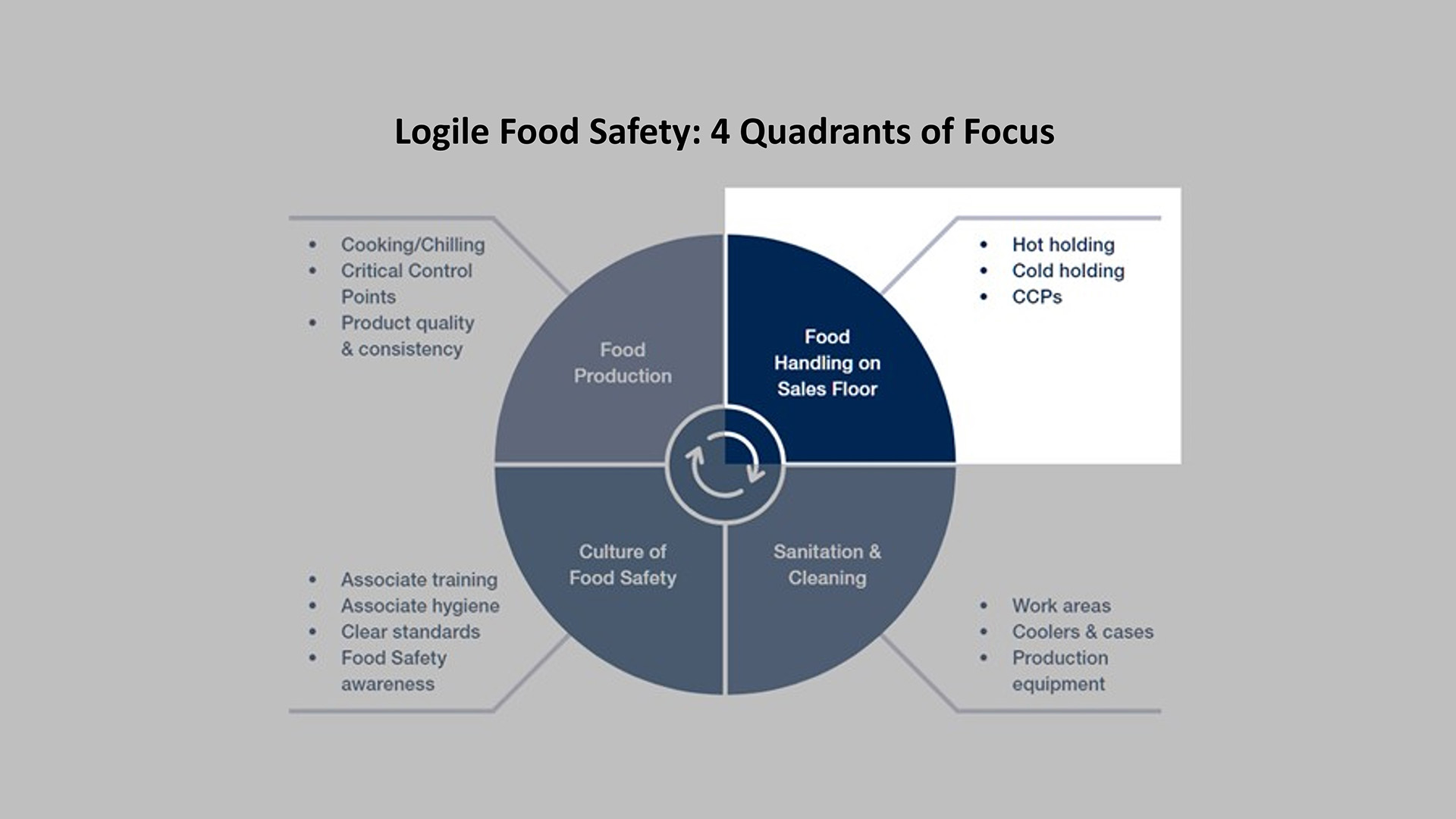3 minute read
Food Safety Quadrant 2: Food Handling on the Sales Floor, Part 2 – Digital Temperature Monitoring

Denise Cole, Product Management
Nathaniel Sheetz, Product Management
Neeta Dash, Product Management
Reduce risk. Protect your customers. Protect your banner. Measure where it matters. We continue our series examining the 4 Quadrants of an effective food safety program (see part 1 and part 2) with a deeper look into Quadrant 2. In our previous post, we described some ways to achieve these goals in food handling and holding environments, and briefly summarized how digital temperature monitoring solutions can be effective. Such solutions combine wireless temperature sensors with powerful software to capture and manage food safety temperatures, and in this post, we will review some of their benefits.
Maintain safe temperatures
The first and perhaps most obvious benefit of digital temperature monitoring systems involves one of the fundamental elements of food safety: ensuring that products are maintained at safe temperatures. Wireless temperature sensors enable an organization to have a complete real-time view of temperatures at the level of the food within an asset, including mobile assets and hot holding units, and even during power outages. When temperatures go outside the configured temperature range for the specified length of time, alerts are automatically generated to notify those best equipped to resolve the problem, and leadership always has the visibility necessary to make informed decisions.
Of course, these automatic real-time temperature readings replace many of the manual temperature checks that previously occupied employees, allowing them to refocus on activities that generate revenue, such as making food, selling food, and providing customer service. Meeting basic food holding safety standards using manual temperature checks, either on paper or digitally, can require at least several hours per day of employee labor, depending on the size of the store and its fresh food offerings. A solution that supports wireless temperature sensors capable of capturing temperatures in both cold and hot holding environments can entirely replace these checks, with the added benefit of reducing costs of associated supplies (like probe thermometers and alcohol wipes).
Avoid food loss and the associated impacts
But these savings are not the only quantifiable benefit. Digital monitoring solutions also help avoid food loss events, reducing shrink and the corresponding labor used to pull, discard, and restock product. After all, food safety is not compromised by temperature alone. Time is a factor as well. When food is found at unsafe temperatures and the history of the product is unclear, the health of the customer cannot be put at risk – and thus waste must be incurred. Conversely, if food is found at unsafe temperatures but the timeline of the cause is clear and within safe parameters, then those products can be saved. By providing early detection of risky conditions, product can be kept safe and shrink prevented.
Save energy and preserve product quality
Digital monitoring systems also create advantages not directly tied to food safety. Two closely linked benefits are energy savings and product quality preservation. Because properly installed sensors relay product-level temperatures, this information can be used to adjust assets to optimal settings that simultaneously keep food safe and avoid wasting energy by overchilling or overheating product, both of which compromise the flavor and texture of food. Energy savings can be particularly substantial when sensors reveal an empty hot holding asset left on overnight – a surprisingly common occurrence that also poses a safety risk.
Gain visibility into asset performance
A related benefit is visibility of asset performance. Clear and easily accessible temperature records help indicate whether a temperature deviation is due to asset malfunction, as opposed to exterior forces (stocking levels, air flow, etc.) that can be easily corrected without a costly service call. Graphic portrayals of equipment performance also help management assess the strengths and weaknesses of specific assets and guide future purchases.
Conclusion
These are a few of the most significant benefits gained by implementing a digital temperature monitoring system. Simply put, the best monitoring enables the best management and the most efficient operations, all of which strengthen the bottom line. Now, having explored these advantages over the course of two posts, the next post in this series will wrap up the first two food safety quadrants and show how a fully integrated digital solution supports cooking, cooling, handling, receiving and more, and uses process guidance and corrective actions to drive food safety success.
Logile will be at the International Association for Food Protection (IAFP) 2023 Annual Meeting July 16-19 in Toronto, Ontario, Canada – find us at Booth 556 with our partner BluLine Solutions LLC if you are attending!



